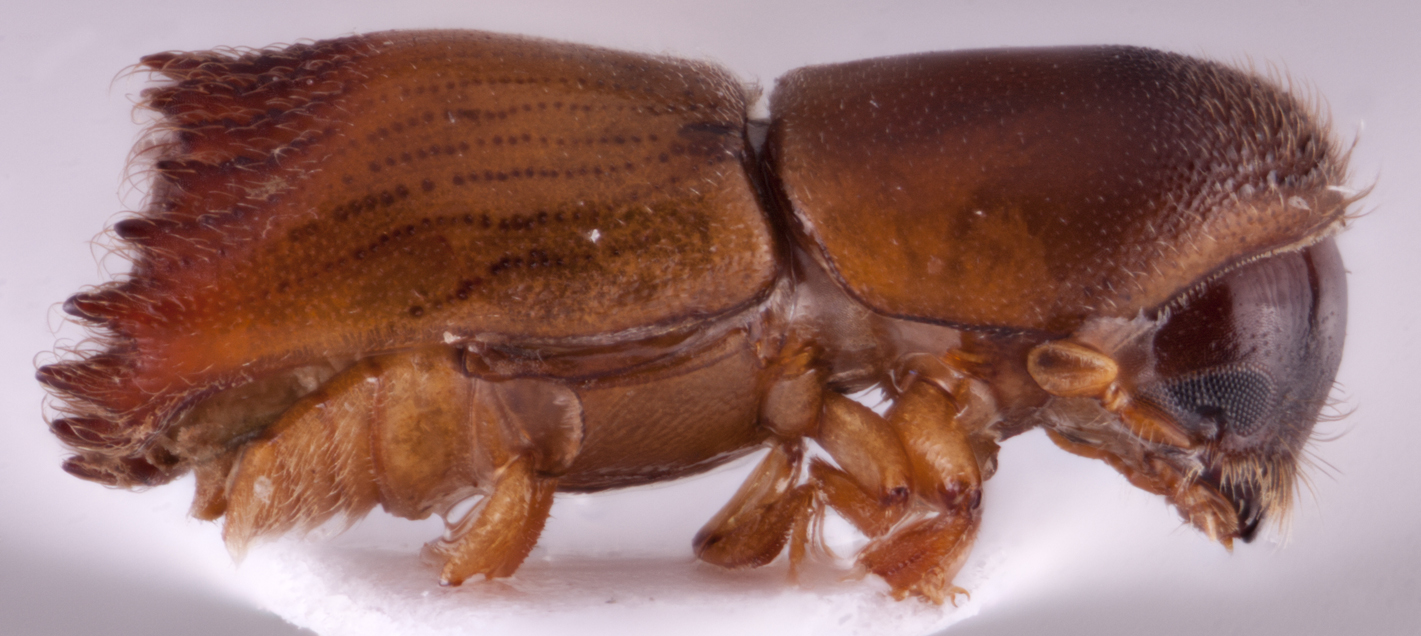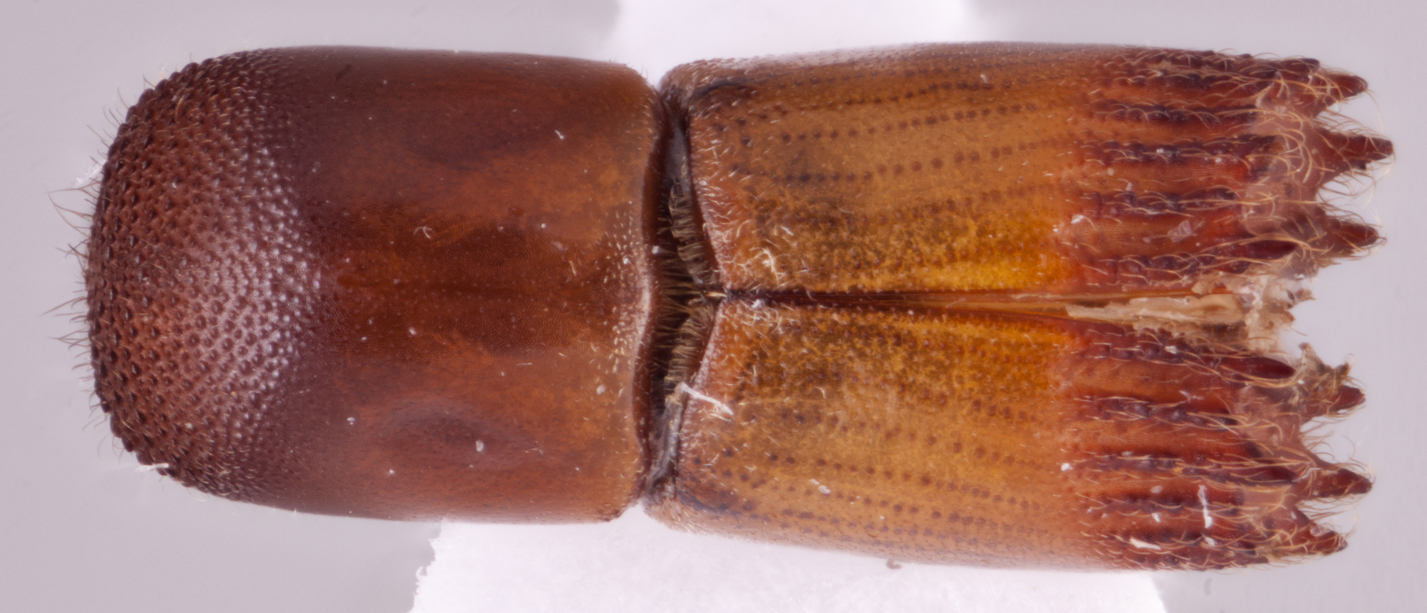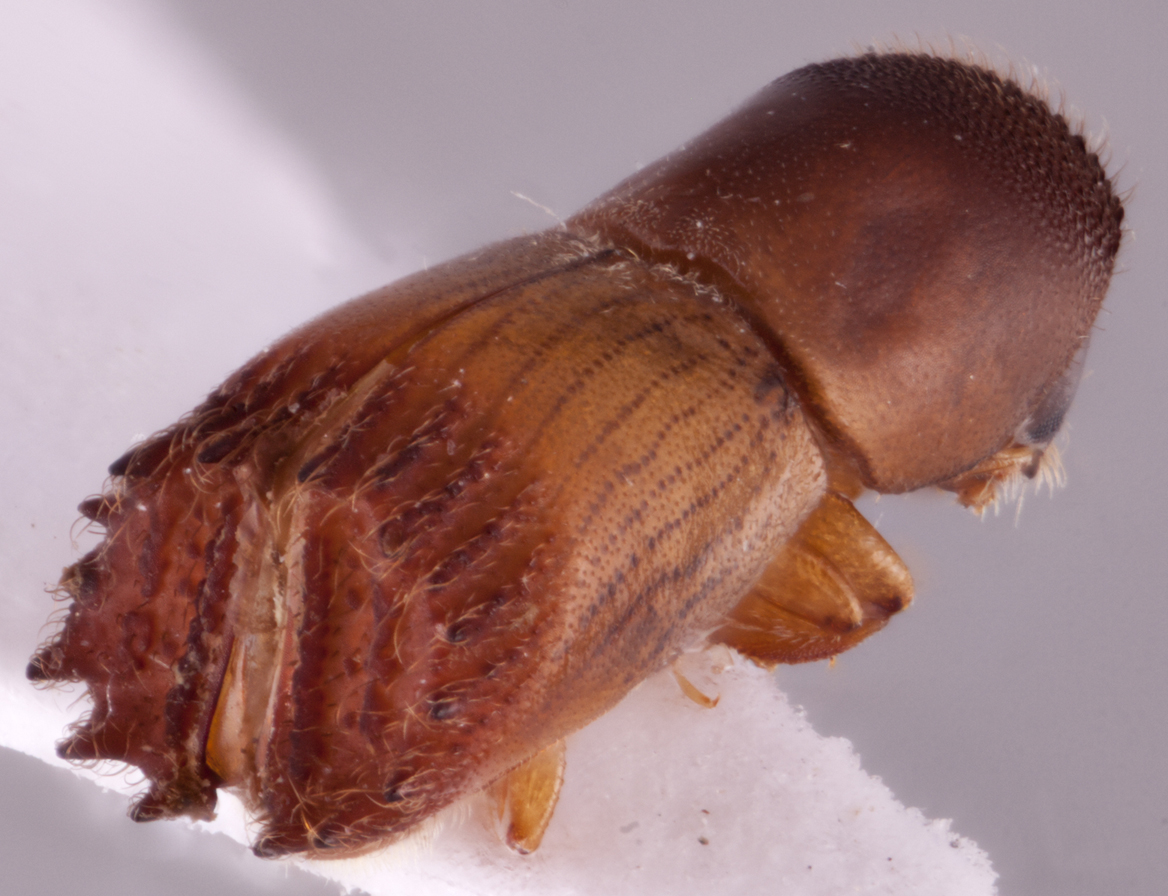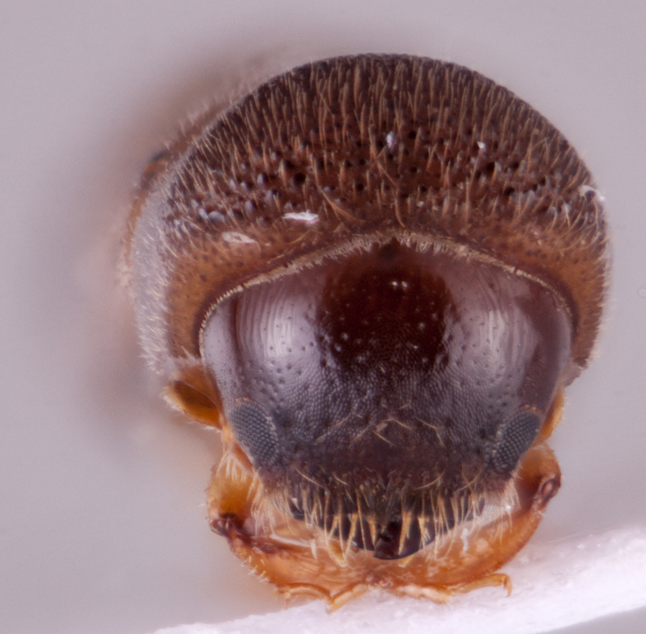Webbia duodecimspinata
|
Webbia duodecimspinata lateral; R.K. Osborn |
|
Webbia duodecimspinata dorsal; R.K. Osborn |
|
Webbia duodecimspinata declivity; R.K. Osborn |
|
Webbia duodecimspinata frontal; R.K. Osborn |
Taxonomic history
Webbia 12-spinatus [sic] Schedl, 1942a: 182.
Diagnosis
3.1−3.5 mm long (mean = 3.27 mm; n = 5); 2.6−2.92 times as long as wide. This species is distinguished by the entireentire:
without marginal teeth or notches
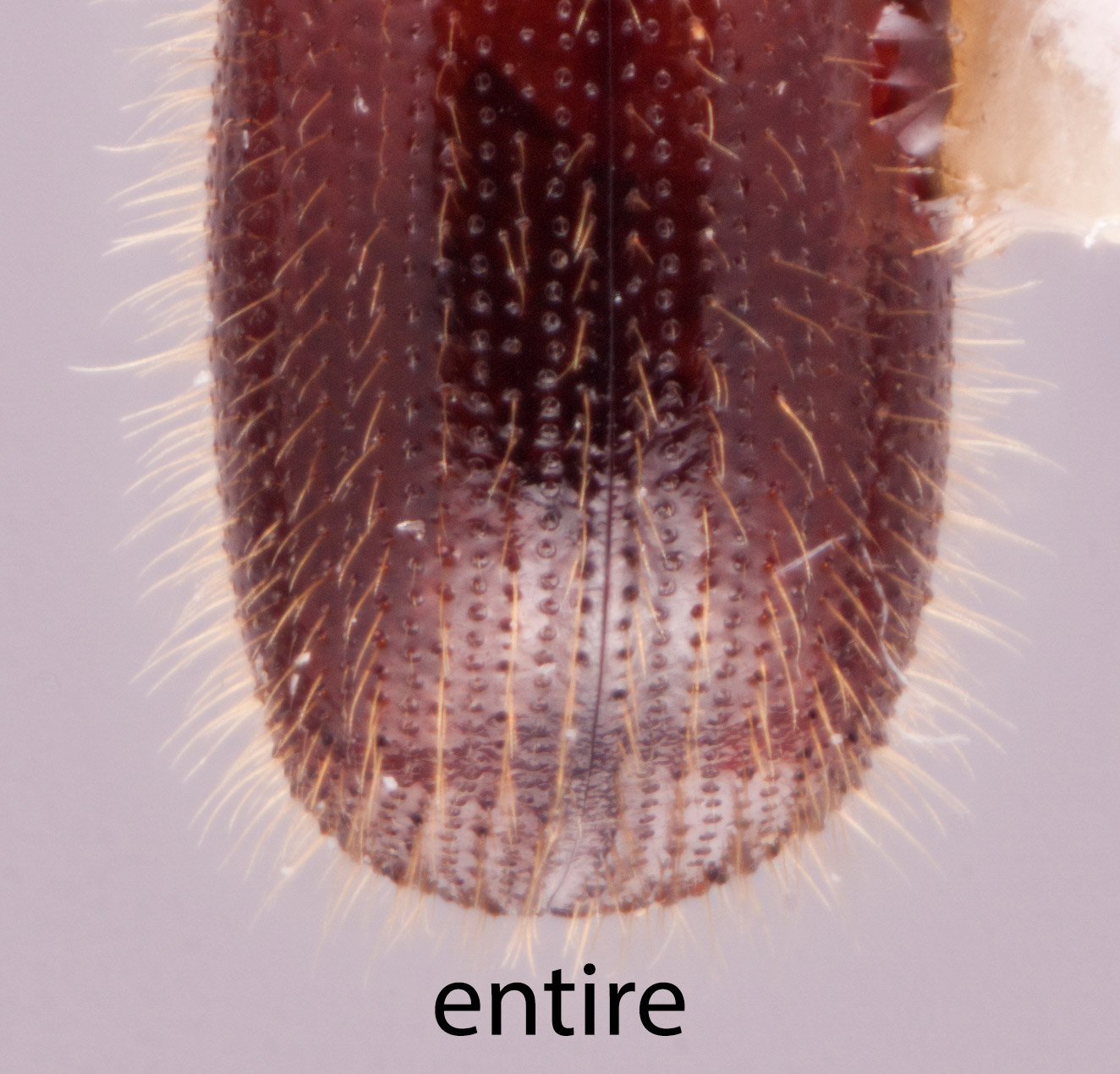 circumdeclivital margin armed by the margin of elytralelytral:
circumdeclivital margin armed by the margin of elytralelytral:
pertaining to the elytra
declivitydeclivity:
downward slope of either the pronotum or elytra
 with 6 spinesspine:
with 6 spinesspine:
an elongate projection of the exoskeleton that is longer than its basal width on each side, lacking teeth on interstriaeinterstria:
on each side, lacking teeth on interstriaeinterstria:
longitudinal spaces along the elytra between the striae, which is not as<br />
impressed and bear smaller punctures.
 2, 4 and 5, or these teeth much smaller than others; declivitaldeclivital:
2, 4 and 5, or these teeth much smaller than others; declivitaldeclivital:
pertaining to the elytral declivity
face with a single vermiculate ridge on each side and a row of tuberclestubercle:
a small knob-like or rounded protuberance of the exoskeleton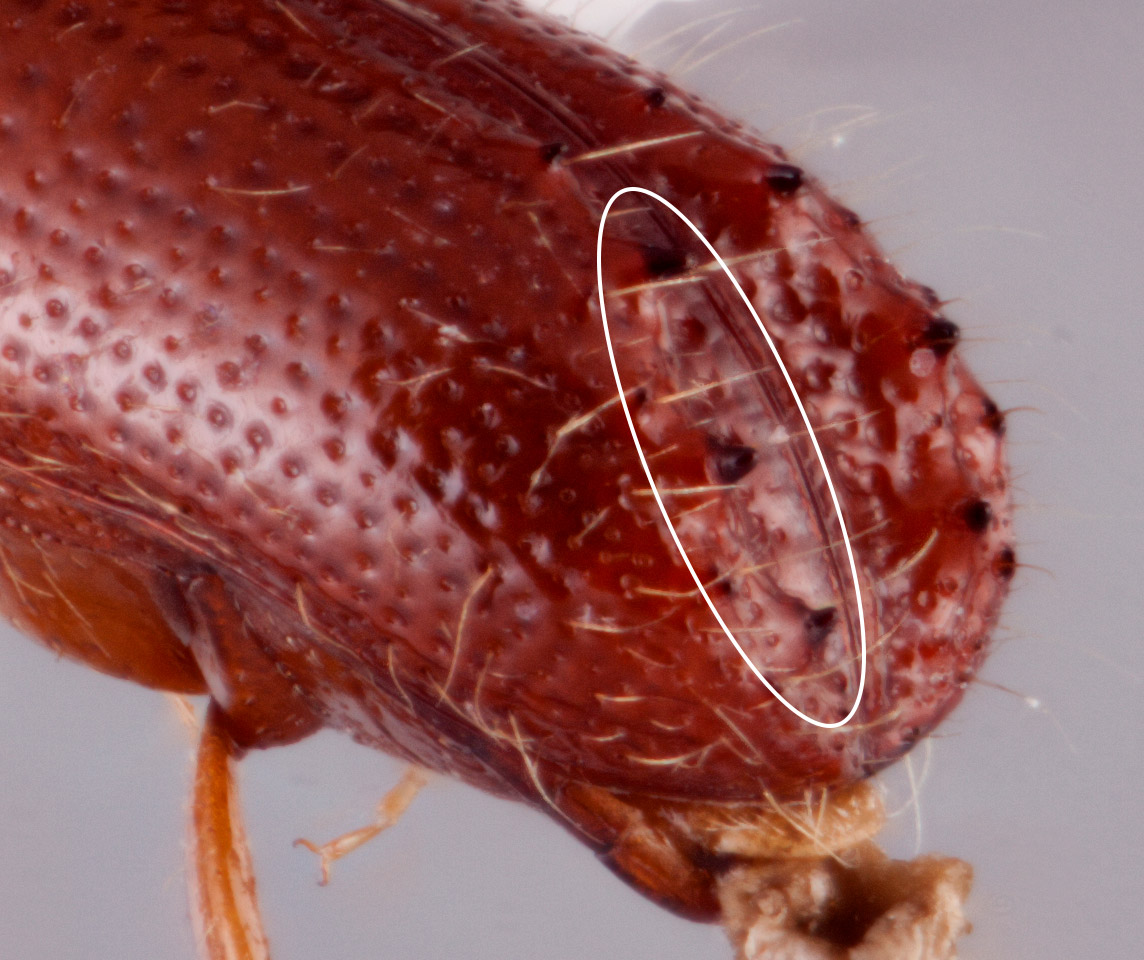 laterallateral:
laterallateral:
pertaining to the side
 to it.
to it.
May be confused with
Webbia dipterocarpi, W. quatuordecimspinata, and W. trigintispinata
Distribution
West Malaysia, Thailand
Host plants
associated with Dipterocarpaceae (Dipterocarpus, Hopea, Shorea) (Beaver and Browne 1978Beaver and Browne 1978:
Beaver RA, Browne FG. 1978. The Scolytidae and Platypodidae (Coleoptera) of Penang, Malaysia. Oriental Insects 12: 575-624. https://doi.org/10.1080/00305316.1978.10432538, Beaver et al. 2014Beaver et al. 2014:
Beaver RA, Sittichaya W, Liu L-Y. 2014. A synopsis of the scolytine ambrosia beetles of Thailand (Coleoptera: Curculionidae: Scolytinae). Zootaxa 3875: 1-82. http://dx.doi.org/10.11646/zootaxa.3875.1.1)
Remarks
A brood of 107 offspring is recorded by Beaver and Browne (1978).
DNA data
specimens not available for sequencing

